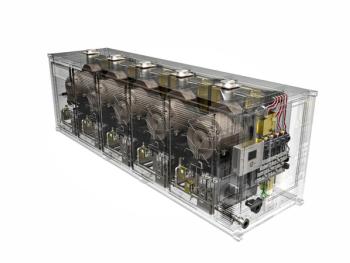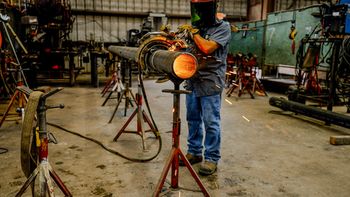
TurboTime Podcast: Additive Manufacturing with 3D Systems
In this episode of the TurboTime podcast, Dr. Mike Shepard, VP of Aerospace and Defense at 3D Systems, talks about additive manufacturing.
In this episode of the TurboTime podcast, Dr. Mike Shepard, Vice President of Aerospace and Defense at 3D Systems, discusses additive manufacturing, including its background as a fabrication technique in the turbomachinery industry, the role of data, as well as the various types of additive manufacturing. Dr. Shepard also addresses the advantages and disadvantages of this 3D printing technology, including size constraints, dimensional tolerance, etc., and advancements he sees happening in the near future.
"The adoption of additive manufacturing has really been growing in the turbomachinery industry,” Dr. Shepard said. “I'd say that's true in a couple of different ways—not just in the new-build environment where you're getting new construction and new designs, but it's also really important in the refit and aftermarket environment—parts, etc. And there are a lot of different reasons, right? You get design flexibility more than traditional methods. However, it's not going to replace things like CNC, but it's going to powerfully complement them. You also get very complicated geometries, which are possible now. And it's easy to incorporate extra complexity like cooling channels for fluid flow. You can also utilize it to combine a bunch of parts into one, which is super advantageous. We've seen examples where people were able to go from 200 components sometimes into one, and you can also iterate very quickly. So, these are the types of advantages that designers really love, On the back end, in the aftermarket/spare parts, it can potentially cut down on your lead time. I think a lot of the people who are listening to the podcast have probably had that experience—where you're waiting a year for a part sometimes, right? So with the additive manufacturing technologies that we have now, you can sometimes get that core metal part in a few days. So that kind of design flexibility and really tightening up your supply chain means that people are driven to pick up additive manufacturing technologies."
Shepard closed out the show with a forecast on the future of additive manufacturing technology: "I think we're going to see a lot of improvements in terms of the throughput of the processes and the economy of the processes. I'm really excited about the work that people are doing in metallurgy; there are these new computational methods you can use to discover new alloys, and you’ll see this more and more."
Newsletter
Power your knowledge with the latest in turbine technology, engineering advances, and energy solutions—subscribe to Turbomachinery International today.




